A good finish does more than just make your hardwood floors look nice—it protects them from scratches, moisture, and everyday wear.
I’ve found that picking the right finish not only helps your floors last longer but also brings out the wood’s natural beauty. Whether you like a glossy shine or a soft matte look, your choice will affect both style and performance.
Some finishes deepen the wood’s color, while others keep it light and natural. It really comes down to how much foot traffic your floors get, your lifestyle, and how much upkeep you’re okay with.
I remember feeling unsure at first, but learning about the options made a big difference.
In this post, I’ll walk you through the pros and cons of popular hardwood floor finishes, like oil-based, water-based, and hard wax oil, so you can pick the one that’s right for your home.
What Is a Hardwood Floor?

A hardwood floor is made from solid wood boards cut from natural timber like oak, maple, walnut, or hickory.
Each plank is a single piece of wood that’s milled and finished for flooring. Unlike laminate or engineered flooring, hardwood floors are made entirely of wood and can be sanded and refinished multiple times.
Hardwood flooring is known for its durability, natural beauty, and long lifespan. It comes in a variety of wood species, grains, colors, and plank widths to suit different styles, from rustic to modern.
Because it’s a natural material, each board has unique patterns and tones that add warmth and character to any room.
Whether you choose pre-finished or site-finished wood, hardwood floors offer a classic, long-lasting foundation for your home that can be customized with different stains and protective finishes.
What Does a Hardwood Floor Finish Do?
A hardwood floor finish protects the surface from moisture, scratches, stains, and everyday wear.
Without a finish, wood floors are vulnerable to damage from spills, dirt, and foot traffic. The finish acts as a barrier, helping your floors stay strong and last longer.
It also enhances the wood’s natural beauty by bringing out the grain, color, and texture. Some finishes deepen the tone, while others keep the look light and natural.
The finish you choose also affects the floor’s sheen level and feel, ranging from glossy to matte.
It plays a big role in both the appearance and performance of your flooring, making it an important step in any hardwood installation or refinishing project.
Types of Hardwood Floor Finishes
The finish you choose affects more than how your hardwood floors look; it also impacts how they wear, how often they need care, and how well they hold up in everyday life.
Below, I’ll go over the most common types of hardwood finishes, each with its own strengths and best-use situations, so you can find what works best for your space, too.
1. Oil-Based Polyurethane
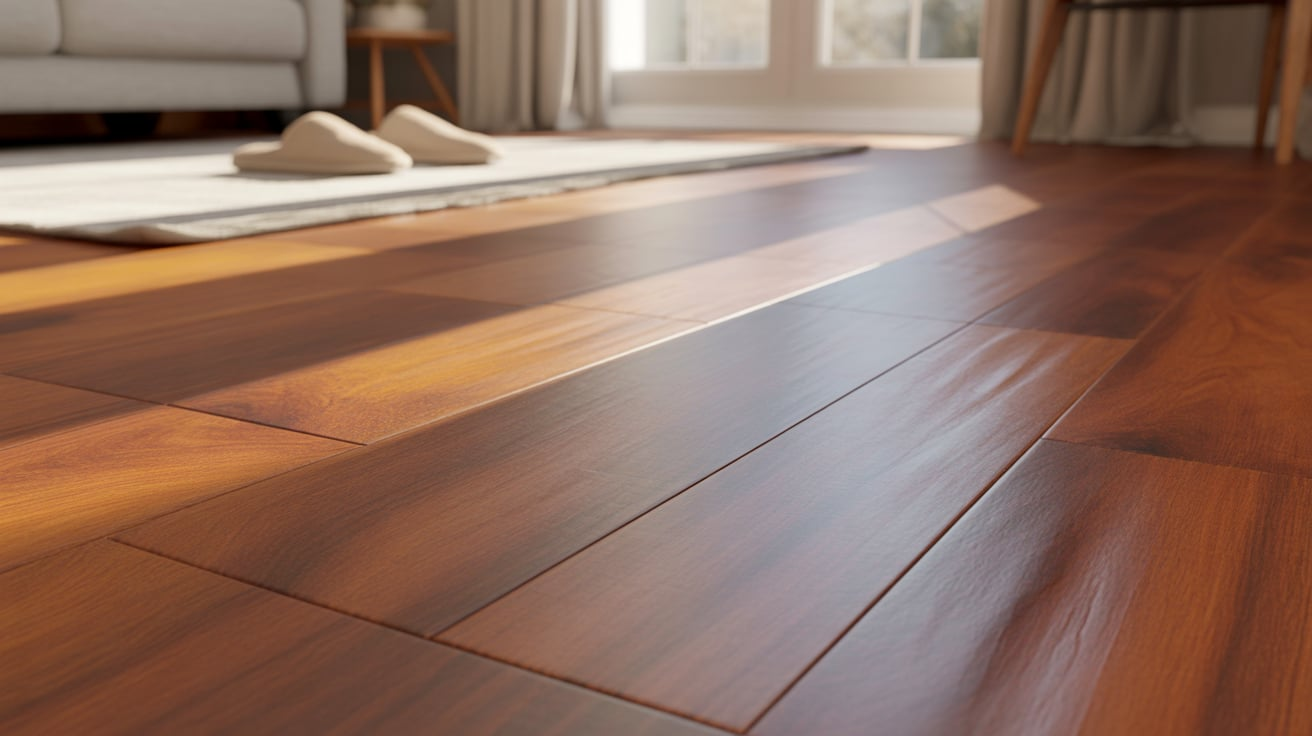
Oil-based polyurethane is one of the most durable and widely used hardwood finishes. It forms a hard, protective surface that withstands heavy foot traffic, pets, and everyday wear.
It leaves behind a warm, amber hue that deepens the natural color of the wood over time, adding a rich, traditional look.
Despite this, it’s a favorite in high-traffic areas like living rooms, hallways, and kitchens due to its toughness and long-lasting results.
2. Water-Based Polyurethane
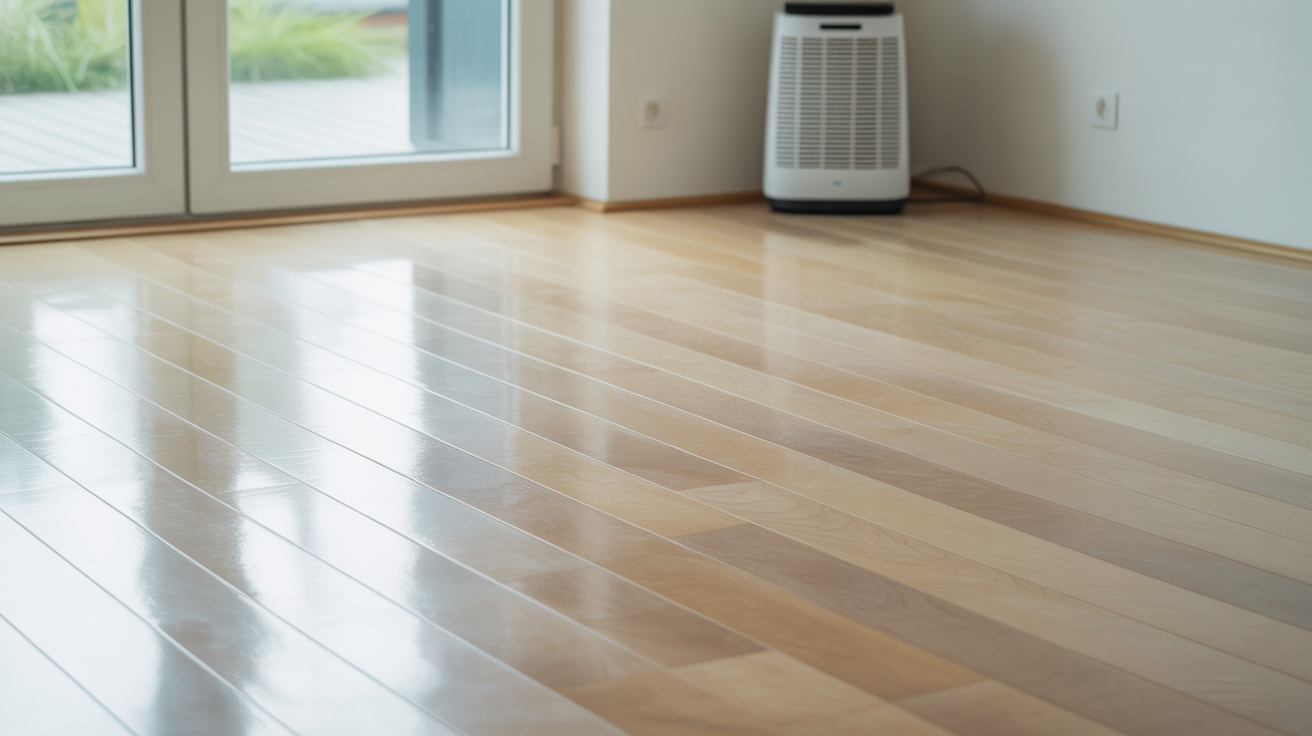
Water-based polyurethane is a clear, low-odor alternative to oil-based finishes. It dries quickly, often in just a few hours, and preserves the wood’s original color without the amber tint.
This makes it ideal for homeowners who want a light, natural finish with minimal color change over time.
It’s a great option for families, allergy-sensitive homes, or anyone wanting a cleaner application process with faster results.
3. Hardwax Oil
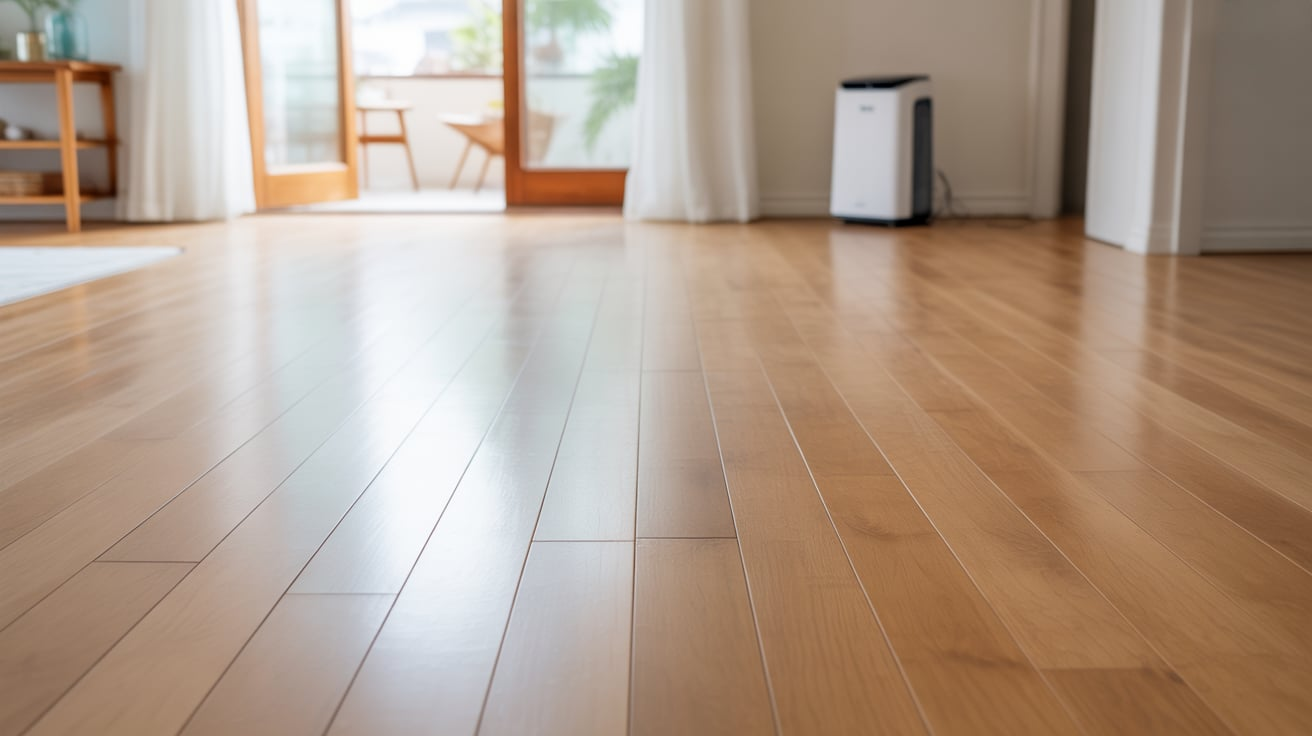
Hardwax oil finishes are growing in popularity for their natural, breathable finish that enhances wood grain without forming a plastic-like topcoat.
The finish soaks into the wood and provides surface protection, leaving a soft matte sheen that feels warm and organic underfoot.
It’s easy to spot-repair scratches or wear areas, which is a major plus for active households.
However, it does require more regular maintenance, including occasional re-oiling of high-traffic zones.
4. Penetrating Oil Sealer
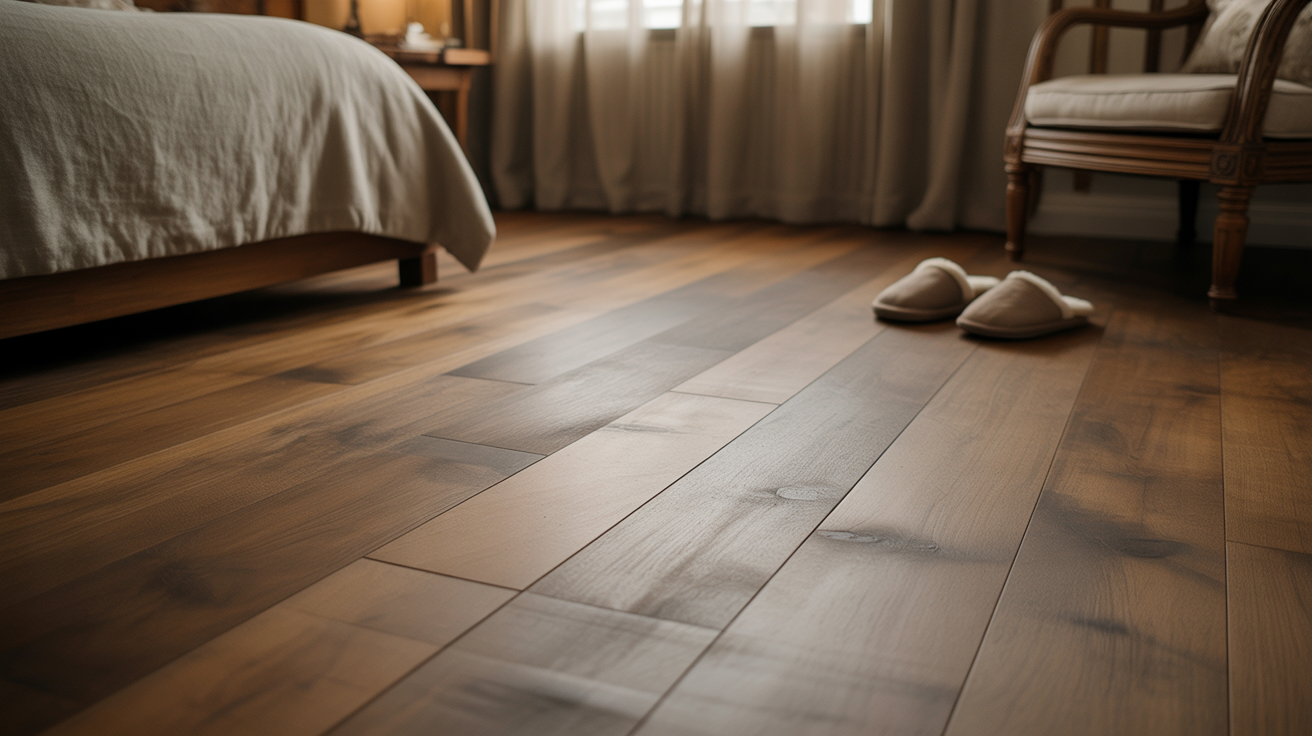
Penetrating oil sealers offer a very natural, low-gloss finish by soaking deep into the wood and highlighting the grain. These finishes give wood a classic, rustic feel without much surface film.
They provide basic moisture resistance but less surface protection than polyurethanes.
They’re best suited for low-traffic areas like bedrooms, home offices, or formal spaces where the floor won’t be subject to constant wear.
5. Acid-Cured (Swedish) Finish
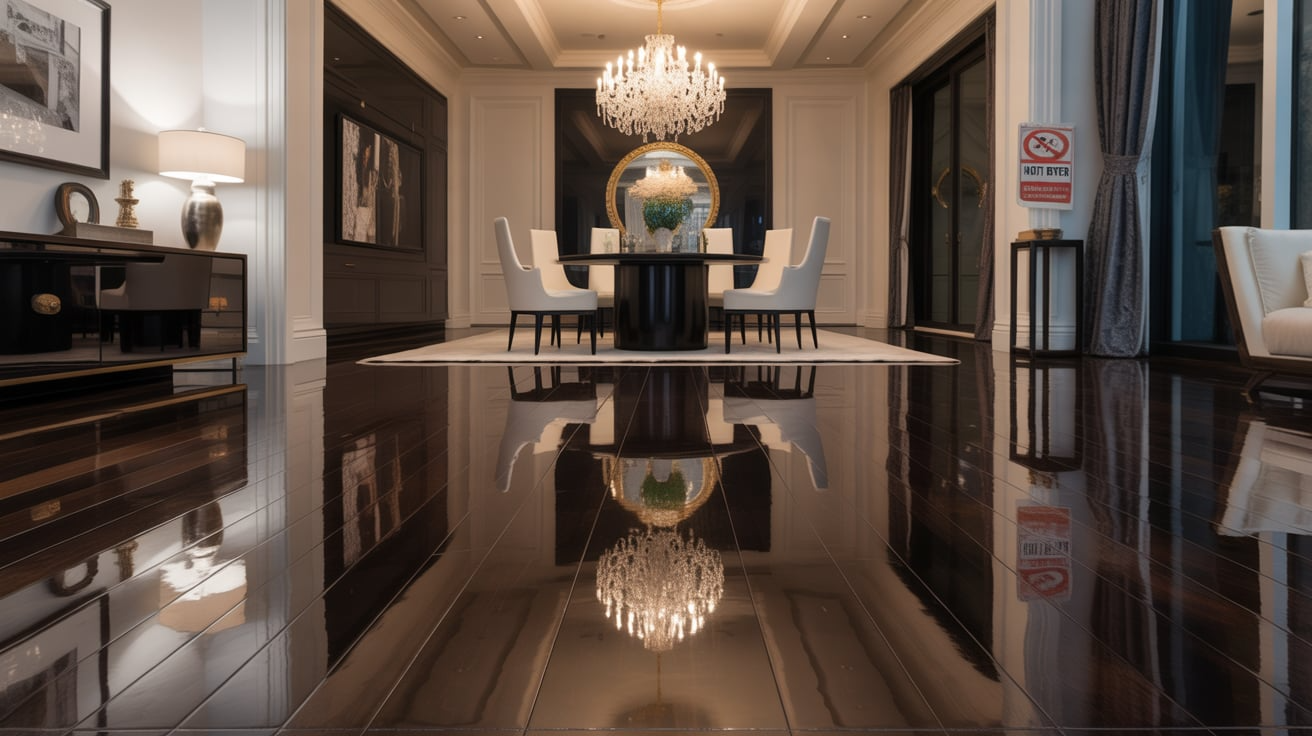
Acid-cured finishes, also called Swedish finishes, are considered some of the toughest and most durable on the market.
They’re ideal for high-end installations or exotic hardwoods that need exceptional protection.
This finish dries quickly and offers a rich, glossy appearance with unmatched hardness and chemical resistance.
Homeowners often need to vacate the home during installation. It’s an excellent choice for luxury projects, but not recommended for DIY or eco-sensitive homes.
Choosing the right hardwood floor finish can make a big difference in how your floors look, feel, and hold up over time. Here’s a quick side-by-side comparison to help you decide:
| Finish Type | Durability | Appearance | Dry Time | Maintenance | Best For |
|---|---|---|---|---|---|
| Oil-Based Polyurethane | Very durable | Warm, amber tone | 24+ hours | Easy to maintain | High-traffic areas |
| Water-Based Polyurethane | Durable | Clear, non-yellowing | 4–6 hours | Low maintenance | Homes wanting a natural look |
| Hardwax Oil | Moderate | Soft, matte look | 4–8 hours | Needs regular care | Natural, eco-friendly homes |
| Penetrating Oil Sealer | Moderate | Rich, deep tone | 24+ hours | Re-oiling needed | Traditional or rustic spaces |
| Acid-Cured (Swedish) | Extremely durable | High-gloss, ambering | 1–3 days | Hard to refinish | Exotic woods or luxury interiors |
How to Choose the Best Finish for Your Hardwood Floors
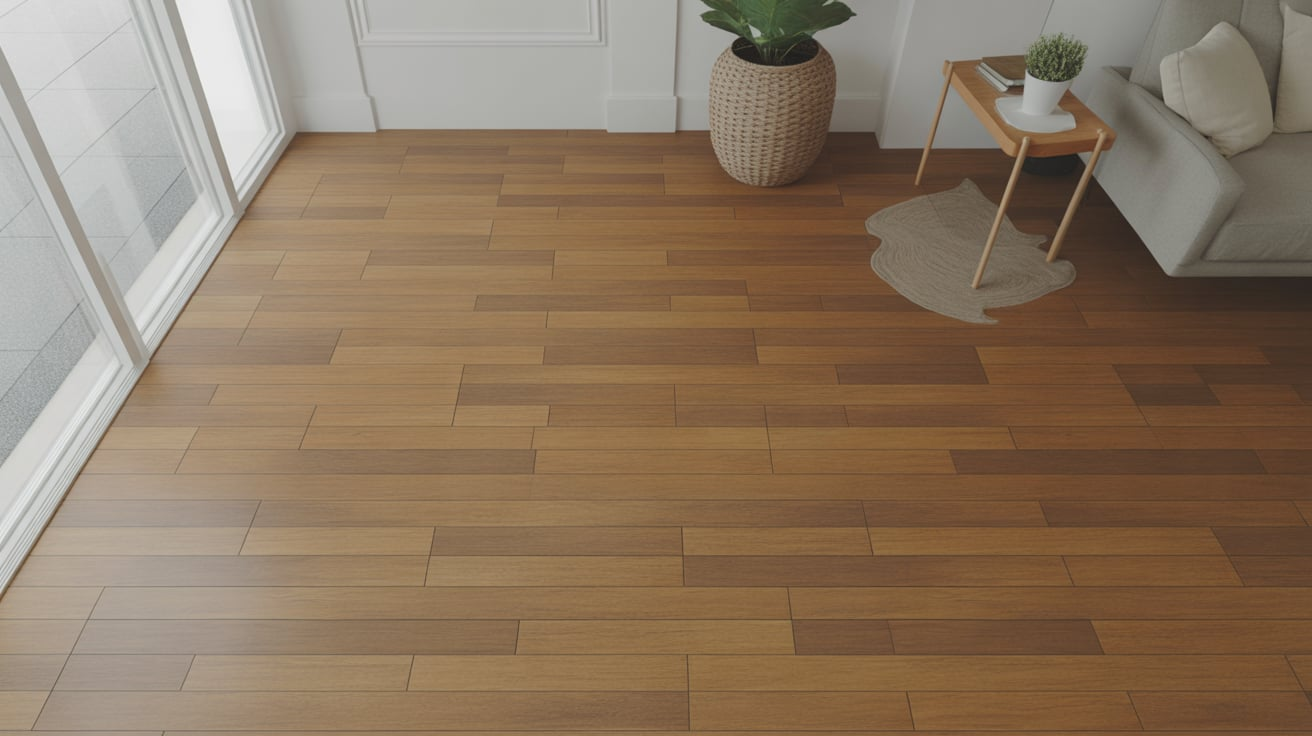
With so many hardwood floor finishes available, choosing the right one depends on more than just looks.
Consider how your floors will be used, what kind of care you’re willing to commit to, and even your home’s air quality.
1. Consider Your Lifestyle (Pets, Kids, Traffic)
If your home is busy with kids, pets, or frequent guests, you’ll need a durable, high-traffic finish like oil-based polyurethane or acid-cured options.
These finishes create a tough barrier that resists scratches, scuffs, and general wear.
In low-traffic areas, you can get away with softer, more natural finishes like hardwax oil or penetrating oils.
2. Desired Look (Matte, Satin, Gloss)
Your finish determines your floor’s final appearance. For a modern, understated look, go with matte or satin finishes.
Want something shiny and dramatic? Glossy polyurethane delivers high reflection.
Some finishes, like hardwax oil, offer a natural, textured look that shows off the wood grain without much shine.
3. Maintenance Needs and Ease of Repair
Think about how much time you’re willing to spend maintaining your floors.
Polyurethanes are low-maintenance but can be difficult to spot-repair, you often need to refinish an entire section.
Hardwax oil and penetrating oils, while needing more frequent touch-ups, are easier to repair in small spots without sanding everything down.
4. Environmental Factors and VOCs
Some finishes emit high levels of VOCs (volatile organic compounds) during application, which can affect indoor air quality.
If you’re sensitive to chemicals or have kids and pets, consider water-based polyurethane or hardwax oil, which have low to zero VOC formulas.
Acid-cured finishes, while tough, require strong ventilation and professional handling due to high VOC content.
Tips for Maintaining Hardwood Floor Finishes
- Follow Manufacturer Instructions: Each finish has specific drying times, number of coats, and safety guidelines. Skipping steps can shorten the life of your finish.
- Sand Before Refinishing: Proper sanding removes old finish and preps the wood for better adhesion. Don’t skip this step when recoating.
- Keep Floors Clean and Dry: Dust, dirt, and moisture break down finishes over time. Sweep regularly, clean spills quickly, and use a wood-safe cleaner.
- Use Rugs and Furniture Pads: Place rugs in high-traffic zones and felt pads under furniture legs. This prevents scratches and helps your finish last longer.
Conclusion
Choosing the right finish for your hardwood floors is just as important as choosing the wood itself.
The finish protects your floors from daily wear, enhances their natural beauty, and determines how they’ll look and feel for years to come.
With so many options available, each with different strengths, looks, and maintenance needs, there’s no one-size-fits-all answer.
The best finish for your home depends on your lifestyle, design goals, and how much upkeep you’re willing to do.
Some homeowners prefer the toughness of polyurethane, while others love the natural feel of hardwax oil.
If you’re unsure, try testing finishes on a small, hidden section of flooring, or better yet, consult a flooring professional.
Their experience can help you find a finish that fits your space and stands up to daily life.

